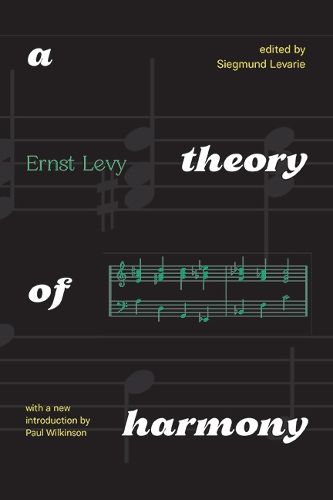Readings Newsletter
Become a Readings Member to make your shopping experience even easier.
Sign in or sign up for free!
You’re not far away from qualifying for FREE standard shipping within Australia
You’ve qualified for FREE standard shipping within Australia
The cart is loading…






This title is printed to order. This book may have been self-published. If so, we cannot guarantee the quality of the content. In the main most books will have gone through the editing process however some may not. We therefore suggest that you be aware of this before ordering this book. If in doubt check either the author or publisher’s details as we are unable to accept any returns unless they are faulty. Please contact us if you have any questions.
The classic work on Levy's theory of negative harmony.
Ernst Levy was a visionary Swiss pianist, composer, and teacher who developed an approach to music theory that has come to be known as "negative harmony." Levy's theories have had a wide influence, from young British performer/composer Jacob Collier to jazz musicians like Steve Coleman. His posthumous text, A Theory of Harmony, summarizes his innovative ideas. A Theory of Harmony is a highly original explanation of the harmonic language of the modern era, illuminating the approaches of diverse styles of music. By breaking through age-old conceptions, Levy was able to reorient the way we experience musical harmony.
British composer/music pedagogue Paul Wilkinson has written a new introduction that offers multiple points of entry to Levy's work to make this text more accessible for a new generation of students, performers, and theorists. He relates Levy's work to innovations in improvisation, jazz, twentieth-century classical music, and the theoretical writings of a wide range of musical mavericks, including Harry Partch, Hugo Riemann, and David Lewin. Wilkinson shows how A Theory of Harmony continues to inspire original musical expression across multiple musical genres.
$9.00 standard shipping within Australia
FREE standard shipping within Australia for orders over $100.00
Express & International shipping calculated at checkout
This title is printed to order. This book may have been self-published. If so, we cannot guarantee the quality of the content. In the main most books will have gone through the editing process however some may not. We therefore suggest that you be aware of this before ordering this book. If in doubt check either the author or publisher’s details as we are unable to accept any returns unless they are faulty. Please contact us if you have any questions.
The classic work on Levy's theory of negative harmony.
Ernst Levy was a visionary Swiss pianist, composer, and teacher who developed an approach to music theory that has come to be known as "negative harmony." Levy's theories have had a wide influence, from young British performer/composer Jacob Collier to jazz musicians like Steve Coleman. His posthumous text, A Theory of Harmony, summarizes his innovative ideas. A Theory of Harmony is a highly original explanation of the harmonic language of the modern era, illuminating the approaches of diverse styles of music. By breaking through age-old conceptions, Levy was able to reorient the way we experience musical harmony.
British composer/music pedagogue Paul Wilkinson has written a new introduction that offers multiple points of entry to Levy's work to make this text more accessible for a new generation of students, performers, and theorists. He relates Levy's work to innovations in improvisation, jazz, twentieth-century classical music, and the theoretical writings of a wide range of musical mavericks, including Harry Partch, Hugo Riemann, and David Lewin. Wilkinson shows how A Theory of Harmony continues to inspire original musical expression across multiple musical genres.